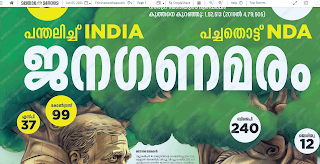Pictures of the just concluded Commonwealth Games in Delhi. Very few photos of Indian winners anyway.
Adobe Dreamweaver's tutorial on building a first website. More here.
This PDF on Introduction to XML and Structured FrameMaker 7.x gives a good overview of concepts.
Alcatel-Lucent opens regional delivery centre in Bangalore, says CNN-IBN.
A science story that was too premature to be published: IISc scientists make progress on new thyroid drug
The Sunday Times on the literary feud between Noble laureates, Gabriel García Márquez and Mario Vargas Llosa.
30 lakh mobiles disconnected over verification.
Oct 16 was World Food Day. "United Against Hunger" is this year's theme.
Nothing great in this list of top 50 guitar riffs of the decade.
Sunday, October 17, 2010
Friday, October 01, 2010
Technical Writing and XML Basics-Part 1
XML (eXtensible Markup Language) is a markup language that allows you to define and structure data using tags and attributes. The capabilities of XML can be extended by creating new tags. Data can be structured and validated easily. XML documents works cross-platform. In XML, there is clear separation between data or contents (XML document) and presentation. The presentation is specified by the Stylesheet.
Processing Instruction (PI): The XML declaration statement that begins the XML document.
Tags (< >): The name that identifies the piece of information.
Elements: Basic units that identify and describe data. A Root element contains all other elements. Elements that contain other elements are parent elements. Elements contained in Parent elements are Child elements.
Content: Data represented by the elements.
Attributes: Provides additional information about elements and includes a name and value pair. Elements and attributes are the building blocks of DTD.
Entity: W3Schools.org (http://www.w3schools.com/dtd/dtd_entities.asp) defines entities as “variables used to define shortcuts to standard text or special characters.”
PCDATA: Text parsed by a parser.
CDATA: Characters not parsed by a parser.
DTD: Short for document type definition. Defines the structure of data in an XML document. Specifies the elements, their attributes, and their relationships. Using DTD, you can specify whether an element is mandatory or optional.
Internal DTDs occur within the XML document and cannot be used across multiple documents. External DTDs sit as separate files an can be used across multiple documents. XML documents contain references to external DTDs.
Parsing: Process that validates the structure of date in XML documents using programs called parsers. A validating parser validates the XML against the DTD.
XML Schema: Defines the structure of an XML document. It defines the elements, attributes, and the data types.
XSD language: The language used to describe the structure or elements in an XML schema. XSD allows creating new data types.
Stylesheets: Cascading style sheet (CSS) and eXtensible stylesheet language (XSL) are the stylesheets used for XML documents.
XSLT: The language used to transform XML documents into other formats such as XHTML. XSL contains XSL Transformations (XSLT) and XML Path (XPath). XML Path is the language for navigating XML docs.
Processing Instruction (PI): The XML declaration statement that begins the XML document.
Tags (< >): The name that identifies the piece of information.
Elements: Basic units that identify and describe data. A Root element contains all other elements. Elements that contain other elements are parent elements. Elements contained in Parent elements are Child elements.
Content: Data represented by the elements.
Attributes: Provides additional information about elements and includes a name and value pair. Elements and attributes are the building blocks of DTD.
Entity: W3Schools.org (http://www.w3schools.com/dtd/dtd_entities.asp) defines entities as “variables used to define shortcuts to standard text or special characters.”
PCDATA: Text parsed by a parser.
CDATA: Characters not parsed by a parser.
DTD: Short for document type definition. Defines the structure of data in an XML document. Specifies the elements, their attributes, and their relationships. Using DTD, you can specify whether an element is mandatory or optional.
Internal DTDs occur within the XML document and cannot be used across multiple documents. External DTDs sit as separate files an can be used across multiple documents. XML documents contain references to external DTDs.
Parsing: Process that validates the structure of date in XML documents using programs called parsers. A validating parser validates the XML against the DTD.
XML Schema: Defines the structure of an XML document. It defines the elements, attributes, and the data types.
XSD language: The language used to describe the structure or elements in an XML schema. XSD allows creating new data types.
Stylesheets: Cascading style sheet (CSS) and eXtensible stylesheet language (XSL) are the stylesheets used for XML documents.
XSLT: The language used to transform XML documents into other formats such as XHTML. XSL contains XSL Transformations (XSLT) and XML Path (XPath). XML Path is the language for navigating XML docs.
Subscribe to:
Posts (Atom)
Newspaper front pages - June 5
Some images of front pages of newspapers after votes were counted on June 4, 2024 after a ridiculously long parliament elections. Did the ...

-
The following classification of newspaper headlines is based on my journalism notes. They are from the point of page layout. Flush Left -Hea...
-
Some images of front pages of newspapers after votes were counted on June 4, 2024 after a ridiculously long parliament elections. Did the ...
-
On October 27, 2021, the supreme court of India ordered that an independent expert committee will investigate the revelations made in the P...
